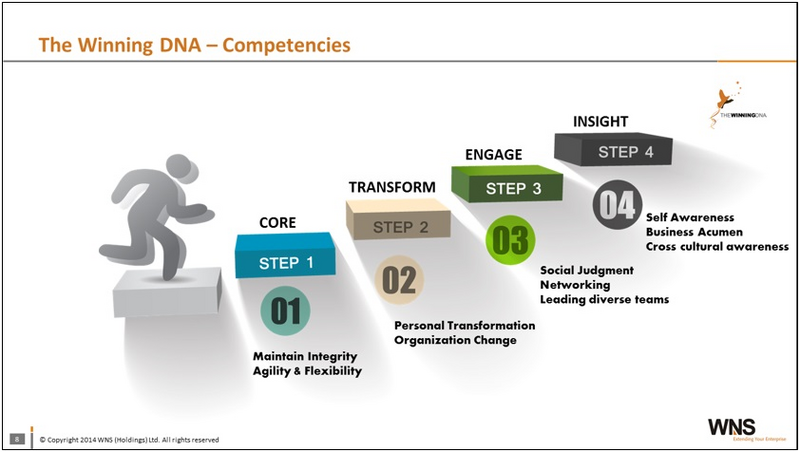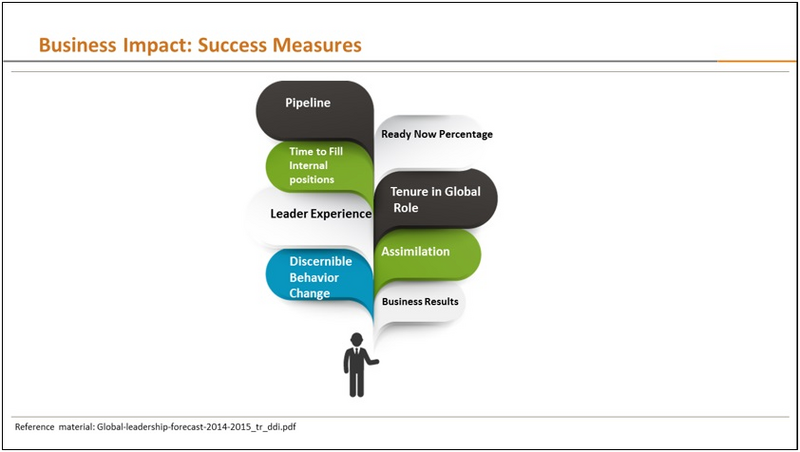ATD Blog
Global Leadership Development
Wed Feb 18 2015

WNS embarked on a transformational growth journey five years ago. We wanted to expand our global reach, so setting up international delivery centers was an integral part of our strategy. Our mission was to become the fastest-growing organization in the business process management field, which we are well on our way to accomplishing.
Of course, we needed strong global leaders to help manage these delivery centers. Nowhere is the dearth of global leaders felt more strongly than in organizations such as ours, in which leaders have to manage integrated businesses across geographical divides. Developing global leadership, therefore, became a strategic imperative.
Using academic research, surveys of about 200 leaders across our 11 operational regions, and structured interviews with our CPO and CEO, the learning and development team at WNS created a customized global leadership development program, which has become one of our flagship long-term development programs. I must admit the program took about nine months to develop, and the end version looks nothing like what we started with. However, the final product definitely works for WNS, and the initial effectiveness measures look very encouraging. The lessons we learned, which I’ve outlined below, are valuable for any HR leader who plans to launch a global leader development program.
**What is your definition of a global leader?
**
We realized that although 80 to 90 percent of our leaders interact with international clients, they all faced similar challenges. Consequently, for the context of our program we defined global leaders as those who deal with diverse cultural and economic environments while managing integrated business processes across geographical divides. This helped us determine the target audience for the program.
What is The Winning DNA?
We used the same focused approach to determine the characteristics that would predict success in a global leader role. Identifying the global leader competencies took us longer than expected, because our initial list—competencies compiled from research and whitepapers—contained more than 50 competencies. We eventually narrowed that list down to 10 competencies, which were further grouped into four clusters. Figure 1 is an illustration of our competency framework, which is internally branded as The Winning DNA. The key criteria used to arrive at the 10 competencies of The Winning DNA were:
current and future role requirements
organizational and business goals
academic research on leading competencies for global leader development.
How did you leverage the power of assessment in the program?
Self-awareness through assessment is the most influential and intense phase of the development journey. The post-assessment discussions are what determines and enables decisions around whom to hire, whom to take calculated risks on, whom to develop, and what the specific areas of development should be. Much thought was given to the assessment tools and methodologies, and a holistic report linking all the assessments was created for each individual in the program. This report then led to individual and group-level plans.
Does the 70-20-10 model work for your program?
Although we had planned to align the program framework with the 70-20-10 model, we changed course. Cultural adaptability is strongly correlated with cultural awareness; therefore, we needed to spend a lot of time on the knowledge parameters related to both the cultural and international business ecosystem. The ratio we ended up with was around 50-25-25.
How do you measure the impact of the global leadership development program?
From the initial stages of program design, it was clear that we needed to align the effectiveness measurement of this program with the organization’s expectations. For example, many global leaders did not stay in that position long, because they failed to assimilate in a global role. As a result, one of the measures we picked was average tenure in the global leader role. The program helps leaders properly prepare for this position, so it had a significant impact on this metric. Figure 2 illustrates some other metrics that we looked at.

Our program is by no means the most comprehensive. However, because it is customized for our organization, it has yielded very encouraging results. We foresee many more changes in the framework, mainly to make the program more role focused. For instance, we have started working on variations of this framework to target two other global roles in the organization. We are also looking at beginning this program at a much earlier phase in a leader’s career, to help leaders navigate language, culture, regulatory, legal, and economic diversity.
More from ATD

